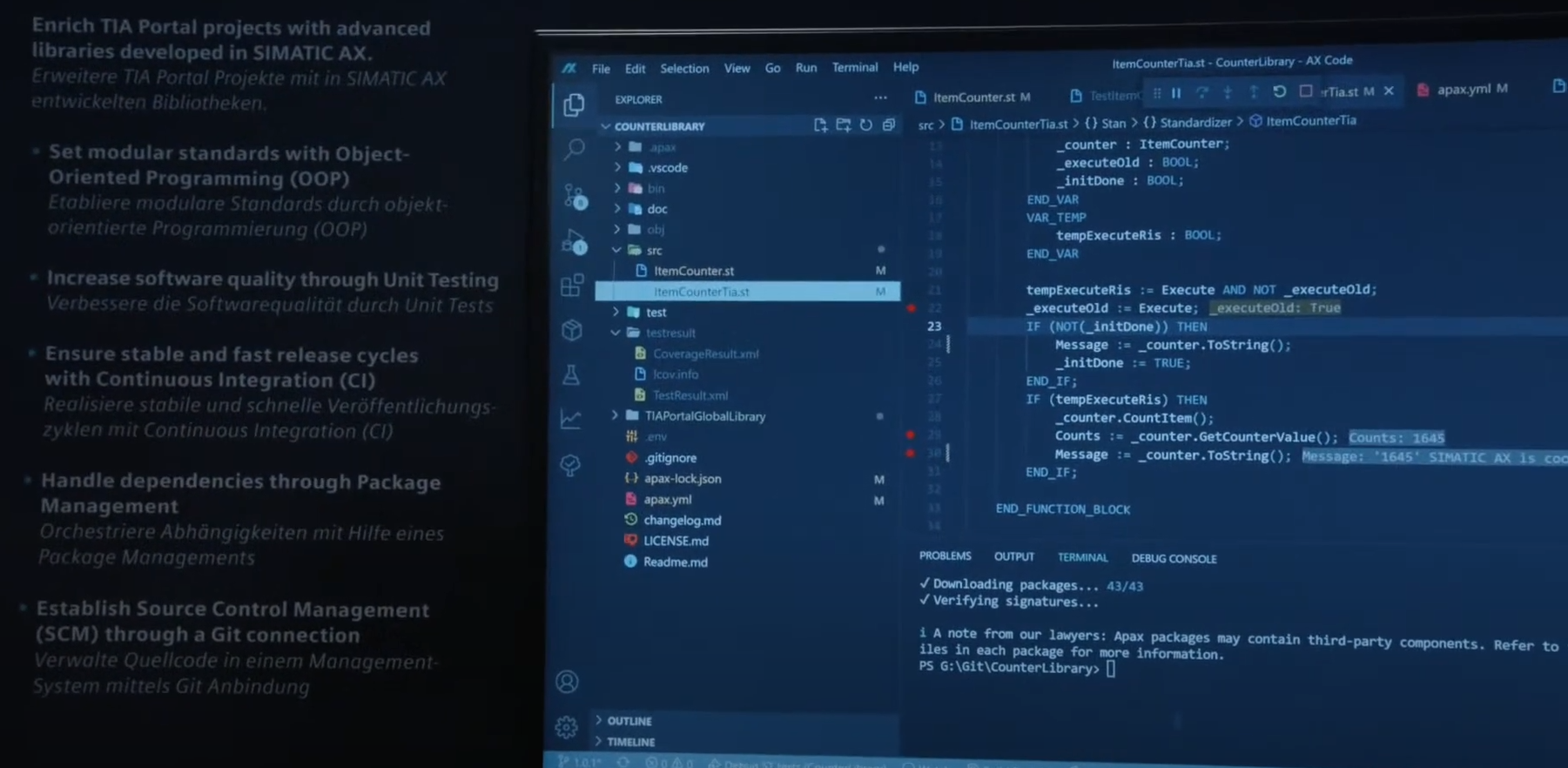Introduction:
Object-Oriented Programming (OOP) is a fundamental concept in software development, offering a powerful way to design and organize code. In this article, we will delve into the core principles of OOP and explore its applications in modern programming. Whether you’re a beginner or an experienced developer, this guide will provide valuable insights into OOP and its significance. Siemens introducing SIMATIC AX platform which allows easier standardization using Object Oriented Programming with TIA Portal
The Basics of Object-Oriented Programming:
At its core, Object-Oriented Programming revolves around the concept of objects. These objects represent real-world entities or abstract concepts in your code. Here are some essential OOP principles:
- Classes and Objects:
- In OOP, classes act as blueprints for creating objects. Each class defines the structure and behavior of its instances (objects).
- Objects, on the other hand, are instances of classes and encapsulate both data (attributes) and methods (functions) that operate on that data.
- Encapsulation:
- Encapsulation involves bundling data and the methods that manipulate that data into a single unit, which is the object. This hides the internal complexity of the object and provides a well-defined interface for interacting with it.
- Inheritance:
- Inheritance allows you to create new classes based on existing classes, inheriting their attributes and methods. This promotes code reuse and supports hierarchy in class structures.
- Polymorphism:
- Polymorphism enables objects of different classes to be treated as instances of a common base class. It provides flexibility and extensibility in your code.
Applications of Object-Oriented Programming:
OOP is widely used in various programming languages and for diverse applications, including:
- Software Development: OOP is integral to creating software systems. It enhances code modularity, making it easier to manage and maintain large codebases.
- Web Development: Popular web frameworks like Ruby on Rails, Django (Python), and Angular (TypeScript) are built around OOP principles, facilitating rapid development and maintainability.
- Game Development: Game developers use OOP to model game objects, such as characters, items, and environments, making it easier to manage complex interactions.
- Mobile App Development: OOP is commonly used in mobile app development, where different app components can be represented as objects with specific behaviors.
- Database Design: Object-Oriented Databases (OODB) use OOP principles to store and retrieve data in a more structured and efficient manner.
Conclusion for using it with TIA Portal and SIMATIC AX
Object-Oriented Programming is a cornerstone of modern software development. Understanding its principles and applications can significantly enhance your programming skills. Whether you’re a software developer, web designer, or aspiring coder, mastering OOP is a valuable asset for your career.
By applying the principles of OOP, you can create more organized, maintainable, and efficient code, ultimately leading to better software solutions in today’s technology-driven world. So, embrace OOP and unlock its potential in your coding journey.

